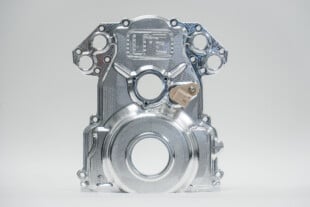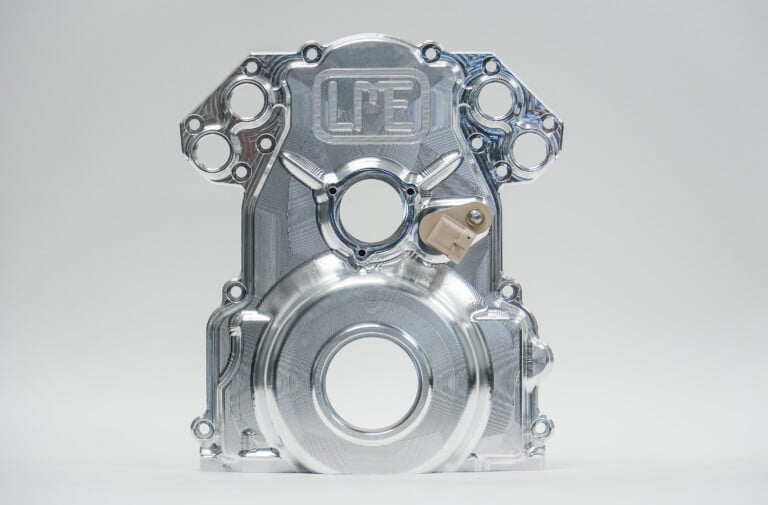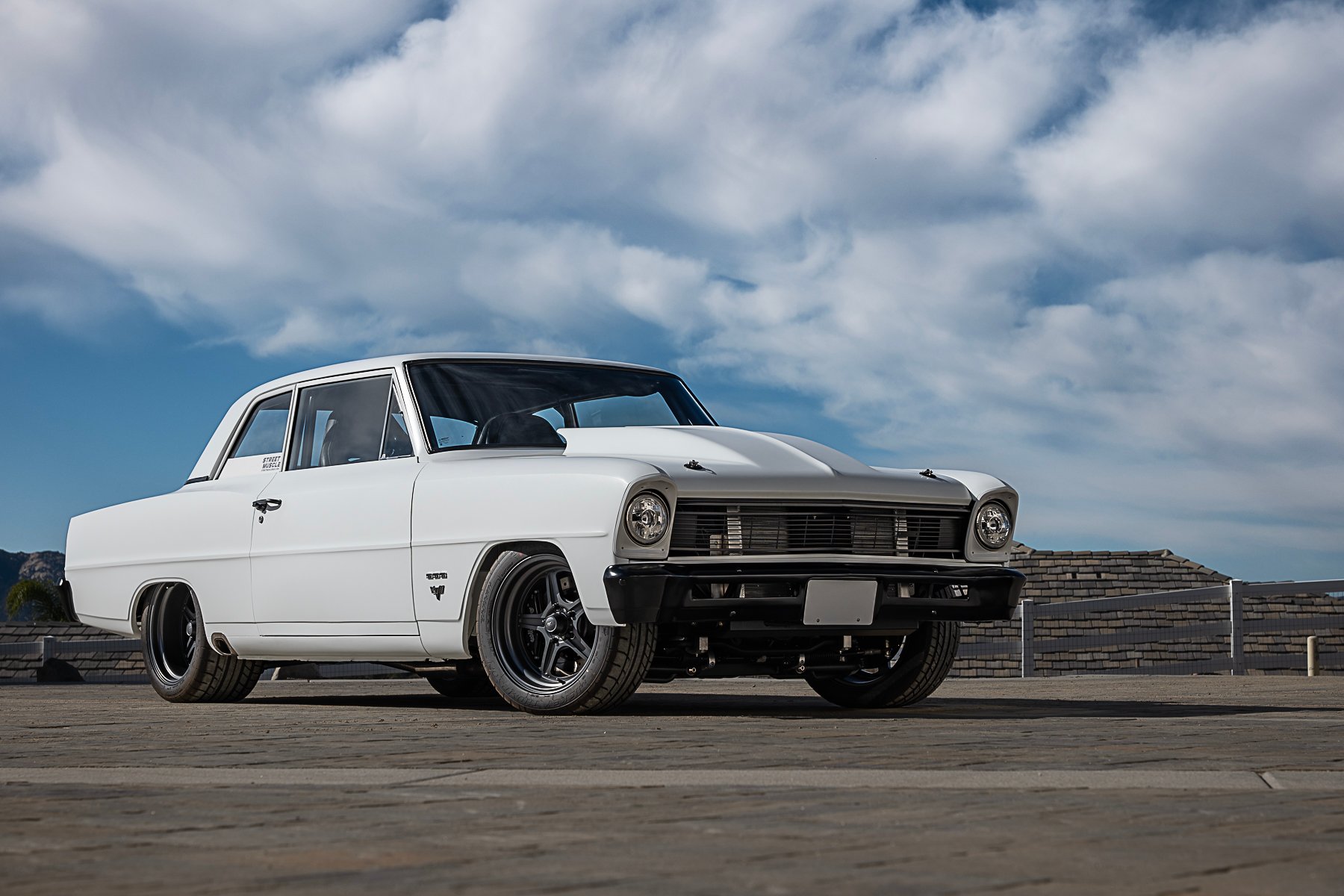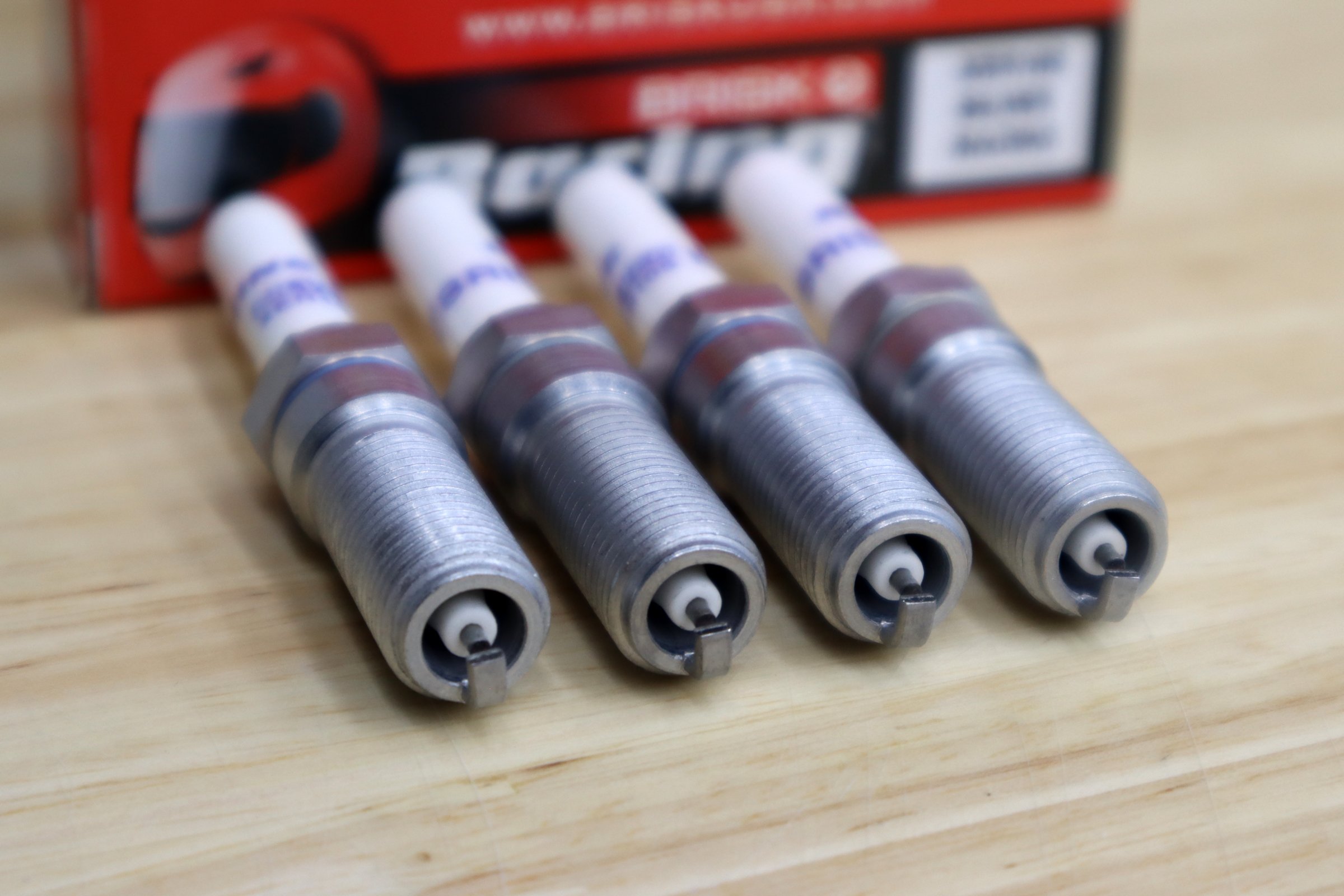Imagine it is the end of the 1970s right now: the few remaining automobiles left from the muscle car era are merely shells of themselves, performance-wise. Factory Ford Mustangs, Chevrolet Camaros, Pontiac Trans Ams, and Chevrolet Corvettes are just underpowered, graphics-laden coupes with laughable V8 horsepower and not much for muscle car fans to cheer about.
The horsepower malaise era is in full effect, and it will be several years before it gradually begins to fade away as technology will evolve throughout the 1980s, 1990s and beyond. That doesn’t stop the Chevrolet, however, from tinkering with different prototype cars, including a special group of factory turbo C3 Corvettes.
Giving Performance a Boost
Interestingly, there was more than one Turbo Corvette prototype from Chevrolet. According to Wayne Ellwood in Vette magazine, there were three well-documented turbocharged third-generation (C3) Corvette prototypes. These mules, which were collectively referred to as “Piggins cars” after Vince Piggins, the leader of the performance group, were developed in phases.
First, there was the Phase l Corvette, built onto a silver L48-powered 1979 Corvette. The standard L48 was rated at just 195 horsepower and utilized a Rochester Quadrajet carburetor, but the Phase 1 turbo had a Bendix EFI “batch injection” package sourced from Cadillac to handle fuel delivery in a less potentially troublesome way.

The Phase 1 turbo C3 prototype, as seen in Car and Driver’s September 1979 issue
It came equipped with a Garrett AiResearch T3 turbocharger. Ellwood notes that “an electronic ‘brain’… monitored engine RPM, manifold pressure, engine and air temperature, and the readings of a closed-loop oxygen sensor.” The Phase I L48 Turbo Corvette did have some good performance numbers – at least for the time. Ellwood states that the L48 Turbo ran the quarter-mile in 14.38 seconds at 95.64 MPH using 6.5 pounds of turbo boost.
Turbocharging was an early solution to the horsepower malaise of the 1970’s and early 1980’s -Phillip Scott
Car and Driver tested the turbocharged L48 for its September, 1979 issue, and their numbers were close to those stated by Ellwood: 0-60 MPH in 6.3 seconds, and the quarter mile passed in 15.0 seconds at 94 MPH. It did the quarter mile time 1.1 seconds quicker and 4 MPH faster than a stock 1978 L48 equipped Corvette, which was certainly better, even if not by a huge margin.
Car and driver also noted, “The turbocharger is somewhat special as well. The general AiResearch T03 design is shared with Mercedes-Benz’s 300SD, although some resizing of components has been done to suit the displacement and flow characteristics of the Chevrolet V8. This unit features an integral waste gate of the poppet-valve type, set for seven pounds of boost. John Pearce, development engineer on the project, estimates the system is good for 280 to 290 horsepower.”
Again, for 1979, that was a good number, especially since production Corvettes had to wait until the 1990 ZR-1 to fly past the estimated horsepower of the turbocharged L48 Corvette — well over a decade. It took a long time to develop naturally-aspirated engines capable of matching or surpassing the horsepower numbers at the peak of the muscle car era in 1970, but it did finally happen.
Turbocharging was an early solution to the horsepower malaise of the 1970s and early 1980s, but other issues, such as passing stricter emissions regulations needed to be dealt with, and those turbocharged Corvette prototypes would have had to overcome those hurdles in order to become viable production cars.
The Next Evolution
Next, the Phase II Turbo Corvette was created. It debuted in late 1979 with a new paint scheme (metallic silver with a striping maroon setup, deep red, and flaming orange). A similar color layout carried over to the interior of the Phase II Turbo Corvette; besides cosmetic changes, it also had some mechanical innovations the Phase I Turbo Corvette lacked. It was not based upon the base model L48 engine, but the “high performance”225 horsepower L82 engine (but with the L48’s camshaft, with lower overlap more suitable to the turbo application).
According to Ellwood: “An AiResearch T3 turbo, set at 7 PSI and fitted with an integral wastegate, was again utilized. This system fed the engine through a new throttle-body-injection system from GM’s Rochester Products division. Upgraded Delco electronics monitored the interaction of the package’s components, and a knock sensor allowed for ignition retard when detonation was sensed.”
Phase II also included improvements that reduced “turbo lag,” which improved throttle response time. Other than those and several other related improvements, the Corvette had stock components, including the Turbo 350 transmission and 3.55 axle ratio with Posi-traction. The suspension was Chevrolet’s FE7 Gymkhana option with 255/15 tires mounted on 8.5-inch rims.
Finally, the Phase III Turbo Corvette arrived, offering a revised blue and white paint design, and according to Ellwood, was the most technologically advanced of the three Turbo Corvette prototypes: “Piggins’ group had continued to refine the existing turbo design, adding aluminum heads and other trick parts to pare weight and enhance performance. But the package’s high cost, combined with tightening federal emissions regulations and advances in naturally aspirated engine technology, spelled doom for the project.”
Shrouded in Mystery
 At least one other turbo C3 with a likely factory pedigree exists; the white 1980 L82 car currently on loan to the National Corvette Museum from Mark and Alice Kammerman. The car differs significantly from the Piggins turbos in that it uses a “blow through” carbureted induction system in place of their various forms of fuel injection.
At least one other turbo C3 with a likely factory pedigree exists; the white 1980 L82 car currently on loan to the National Corvette Museum from Mark and Alice Kammerman. The car differs significantly from the Piggins turbos in that it uses a “blow through” carbureted induction system in place of their various forms of fuel injection.
Instead of the standard-issue Q-Jet, a Holley mechanical secondary 4150 gets fed pressurized air from the AiResearch turbo, and a supplemental electric fuel pump increases fuel pressure to the float bowls while the turbo is making boost.
Per Mark Kammerman, who bought the car with a mere 12,000 miles on the odometer in 1986, the carburetor has proven to be troublesome over the years, frequently leaking from the seals thanks to the stress of the blow-through pressurized design. Featured in the November 1980 issue of Road Test magazine, the car was ostensibly built at the GM tech center, but no details are easily discovered about why it was seemingly put together in parallel with the Piggins cars, or how it escaped into the wild.
While carbureted factory turbo cars have been successfully developed over the years, the carbed Corvette would seem to be a step backwards from the more advanced, and potentially cleaner and more efficient EFI prototypes.
The Turbo You Could Buy
The story of factory turbo Corvettes doesn’t end with the prototypes, though, if you stretch the definition of “factory” far enough. With the introduction of the C4 Corvette in the 1984 model year and Tuned Port Injection in 1985, the stage was set for the only Corvette Turbo you could buy off a dealership floor. Starting in 1987, GM offered option code B2K, the Callaway Twin Turbo. Completed cars were shipped to Callaway for modification, then sold through the Chevrolet dealer network.
Callaway produced some downright powerful Corvettes in the late 1980s and 1990s. Power ratings were 345 horsepower and 465 pound-feet of torque—certainly great for the late 1980s, but less than a normally-aspirated production Corvette Stingray makes today, which pumps out over 450 horsepower in stock form. That powerful twin turbo-charged engine gave the Callaway Corvette a top speed of 178 MPH, very fast for the time.
The price of the B2K option started at a whopping $19,995 extra that increased the price of a Corvette to a little over $50,000 in 1987, and soared to a $33,000 premium over the base cost of the car by the end of the run in 1991. By comparison, ticking the ZR1 option box instead got you 375 naturally aspirated horsepower for almost $1,500 less, and the ZR-1 was a breathtakingly expensive car for 1991.
Interestingly enough, the Calloway Corvettes carried the same one year, 12,000 mile powertrain warranty honored by General Motors, which was apparently the only time an aftermarket upgrade has been warrantied on a production Corvette.

The B2K option package, while available through the GM dealer network, was actually installed at Callaway’s facility in Connecticut.
A Turbocharged Future?
With the sixth and seventh generations, the Corvette engineering team opted for twin screw supercharging for the C6 ZR1 and the upcoming C7 Z06. That’s not to say we won’t see another factory Corvette Turbo in the future – GM has a lot of turbocharged powerplants in the current inventory, and turbo engines have certain advantages in efficiency and potential power over their mechanically supercharged rivals.
Ever-tightening emissions and fuel economy pressure may once again send them back to the drawing board in search of “free” power from turbocharged boost, and we can add another chapter to the story of Corvette’s turbo prototypes.



















